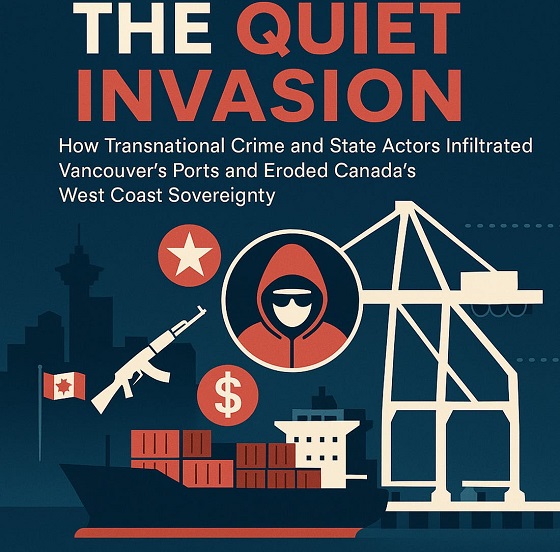COVID-19
Most Canadian nurses were hesitant to take COVID jab: gov’t data

From LifeSiteNews
Researchers found that over 50 percent of nurses in Canada and nearly a third of doctors were hesitant to take the experimental COVID vaccine, but did so anyway to keep their jobs amid workplace mandates.
A recently unveiled survey has found that a significant number of Canadian healthcare workers, including most nurses, were hesitant to take the experimental COVID shots, and only did so because it was mandated across the sector.
According to a survey conducted by the Public Health Agency of Canada, results of which were obtained February 19 by Blacklock’s Reporter, 59 percent of healthcare workers were hesitant to take the experimental COVID vaccine, but many chose to put aside their concerns as the shot was mandatory to keep their jobs.
“The prospect of losing their employment played a role in their decision to get vaccinated or not,” the report, titled National Cross-Sectional Survey Of Health Workers Perceptions Of Covid-19 Vaccine Effectiveness, found.
“They expressed significant hesitation towards COVID-19 vaccines due to the speed of vaccine development and their perception of the potential for side effects,” it continued.
The research found that 31 percent of doctors and 54 percent of nurses admitted “some level of hesitancy” to take the shot. The report found that “concerns about the safety and effectiveness of COVID-19 vaccines were among the largest factors contributing to vaccine hesitancy.”
LifeSiteNews has published comprehensive research on the dangers of receiving the experimental vaccine, including heart damage and blood clots.
A recent study done by researchers at the Canada-based Correlation Research in the Public Interest found that 17 countries have a “definite causal link” between peaks in all-cause mortality and the fast rollouts of the COVID shots and boosters.
However, despite their concerns, the report found that 89 percent of healthcare workers took the shot, mostly due to fears of losing their job.
“Vaccine mandates were one of the most commonly reported reasons for getting vaccinated among respondents with a high proportion of nurses indicating it was the sole reason for vaccination,” the report said.
“You had to get them to keep your job,” researchers quoted one health care worker.
Another revealed that vaccines were “developed in a matter of a couple of months and handed out like candy.”
“I have a family and a mortgage it was like, what would I be able to do to make the same amount of money?” a third questioned.
According to the report, 8 percent of workers refused the shot entirely, 87 percent of whom said they were concerned about the long-term effects of the vaccine, while 72 percent said they rejected that the vaccines were being mandated.
64 percent of those who remained unvaccinated despite mandates said they lacked “confidence in Canada’s regulatory system,” 52 percent thought “the impact of COVID infection is greatly exaggerated,” 45 percent had religious reasons, and 20 percent were planning to become pregnant. Respondents were allowed to select more than one reason for opposing vaccination.
Notably, the survey found that “the proportion of self-reported infection did not vary significantly based on vaccination status,” meaning vaccinated healthcare staff were just as likely to transmit COVID as vaccinated ones.
Currently, vaccine mandates for healthcare workers are still in place in many jurisdictions across Canada, despite a critical staff shortage in plenty of hospitals. While some provincial governments have lifted their mandates, many hospitals still require the experimental vaccine as a condition of employment.
However, many healthcare workers have refused the vaccine and are appealing the mandates. In November, hundreds of British Columbia healthcare workers joined together to sue Provincial Health Officer Dr. Bonnie Henry for ongoing COVID shot mandates preventing them from working.
Similarly, Ontario pro-freedom Dr. Mark Trozzi plans to appeal after he was stripped of his license for critiquing the mainstream narrative around the COVID-19 so-called “pandemic” and the associated vaccines.
COVID-19
New Peer-Reviewed Study Affirms COVID Vaccines Reduce Fertility
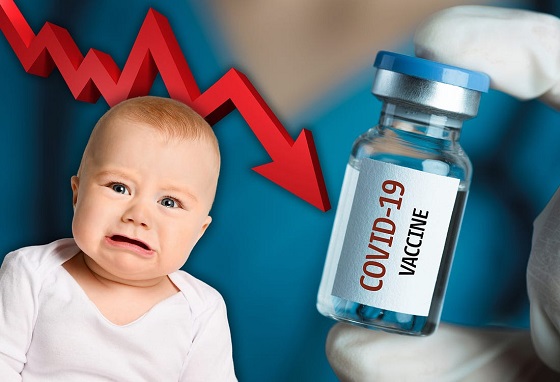
Here’s what the numbers reveal, and what it could mean for humanity
What was once dismissed as a “conspiracy theory” now has hard data behind it.
A new peer-reviewed study out of the Czech Republic has uncovered a disturbing trend: in 2022, women vaccinated against COVID-19 had 33% FEWER successful conceptions per 1,000 women compared to those who were unvaccinated.
A “successful conception” means a pregnancy that led to a live birth nine months later.
The study wasn’t small. It analyzed data from 1.3 million women aged 18 to 39.
Here’s what the numbers reveal, and what it could mean for humanity.
First, let’s talk about the study.
It was published by Manniche and colleagues in the International Journal of Risk & Safety in Medicine, a legitimate, peer-reviewed journal respected for its focus on patient safety and pharmacovigilance.
The study was conducted from January 2021 to December 2023 and examined 1.3 million women aged 18–39. By the end of 2021, approximately 70% of them had received at least one COVID-19 vaccination, with 96% of the vaccinated cohort having received either the Pfizer or Moderna vaccine.
By 2022, a stark difference was clear.
The vaccinated cohort averaged around 4 successful conceptions per 1,000 women per month.
That’s a staggering 33% LESS than the 6 per 1,000 seen in the unvaccinated group.
This means that for every 2 vaccinated women who successfully conceived and delivered a baby, 3 unvaccinated women did the same.
In 2022, unvaccinated women were 1.5 times MORE likely to have a successful conception.
Again, that’s a conception that led to a live birth nine months later.
The authors did not jump to the conclusion that their study proved causation. They cited that other factors may have played a role, such as self-selection bias
However, the researchers noted that self-selection bias does not explain the timing and scale of the observed drop in fertility.
Moreover, birth rates in the Czech Republic dropped from 1.83 per 1,000 women in 2021 to 1.37 in 2024, adding further evidence that the COVID-19 vaccines may be contributing to the decline in fertility.
That downward trend, the researchers argue, supports the hypothesis that something beyond individual decision-making may be affecting conception rates.
As such, they argue that the study’s results warrant a closer and more thorough examination of the impact of mass vaccination.
If this study holds true, and vaccinated women are really much less likely to have successful conceptions, the implications for humanity are massive.
Millions of babies could be missing each year as a result of COVID vaccination, and recent data from Europe and beyond already point to a deeply disturbing trend.
NOTE: Europe experienced a sharper decline in births than usual from 2021 to 2023.
Live births fell from 4.09 million in 2021 to 3.67 million in 2023, marking a 10.3% decline in just two years.
The new Czech study adds to growing evidence that COVID vaccines may be contributing to a dramatic decline in fertility, just as many feared all along.
As Elon Musk warns, “If there are no humans, there’s no humanity.”
Whether the shots are the cause or not, the trend is real—and it’s accelerating.
It’s time to stop dismissing the signals and start investigating the cause.
Thanks for reading. I hope this report gave you real value. This is a critically important topic that deserves attention.
If you appreciate my work and want to help keep it going, consider becoming a paid subscriber.
99% of readers get this content for free. But just $5/month from the 1% keeps it flowing for everyone else.
If this work matters to you, this is the best way to support it.
Be the 1% who makes it possible.
Catch the rest of today’s biggest headlines at VigilantFox.com.
COVID-19
Ontario man launches new challenge against province’s latest attempt to ban free expression on roadside billboards

The Justice Centre for Constitutional Freedoms announces that Ontario resident George Katerberg has launched a legal challenge against the Ontario Ministry of Transportation for banning roadside billboards with social or political messages. Mr. Katerberg believes that the Ministry’s policies go too far and undermine the freedom of expression of all Ontarians.
This case goes back to March 2024, when Mr. Katerberg, a retired HVAC technician, rented a billboard on Highway 17 near Thessalon, Ontario, that featured images of public health officials and politicians alongside a message critical of their statements about vaccines.
After the Ministry rejected his proposed billboard several times on the grounds it promoted hatred, a constitutional challenge was launched with lawyers provided by the Justice Centre. Mr. Katerberg’s lawyers argued that the Ministry’s position was unreasonable, and that it did not balance Charter rights with the purposes of relevant legislation.
The Ministry later admitted that the sign did not violate hate speech guidelines and agreed to reconsider erecting the billboard.
However, in April 2025, the Ministry quietly amended its policy manual to restrict signs along “bush highways” to those only promoting goods, services, or authorized community events.
The new guidelines are sweeping and comprehensive, barring any messaging that the Ministry claims could “demean, denigrate, or disparage one or more identifiable persons, groups of persons, firms, organizations, industrial or commercial activities, professions, entities, products or services…”
Relying on this new policy, the Ministry once again denied Mr. Katerberg’s revised billboard.
Constitutional lawyer Chris Fleury explains, “By amending the Highway Corridor Management Manual to effectively prohibit signage that promotes political and social causes, the Ministry of Transportation has turned Mr. Katerberg’s fight to raise his sign into a fight on behalf of all Ontarians who wish to express support for a political or social cause.”
No date has yet been assigned for a hearing on this matter.
-

 Alberta7 hours ago
Alberta7 hours agoAlberta Independence Seekers Take First Step: Citizen Initiative Application Approved, Notice of Initiative Petition Issued
-

 Automotive1 day ago
Automotive1 day agoElectric vehicle sales are falling hard in BC, and it is time to recognize reality.
-
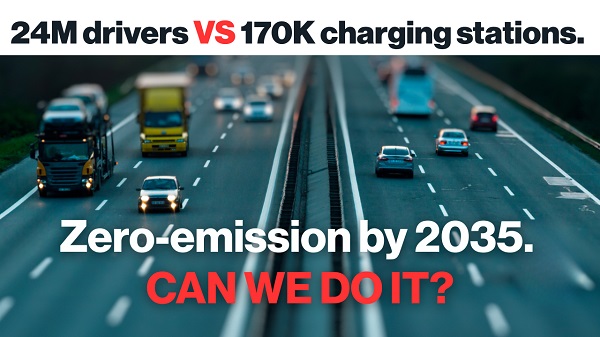
 Automotive1 day ago
Automotive1 day agoPower Struggle: Electric vehicles and reality
-

 Business9 hours ago
Business9 hours agoCanada Caves: Carney ditches digital services tax after criticism from Trump
-

 Crime9 hours ago
Crime9 hours agoSuspected ambush leaves two firefighters dead in Idaho
-
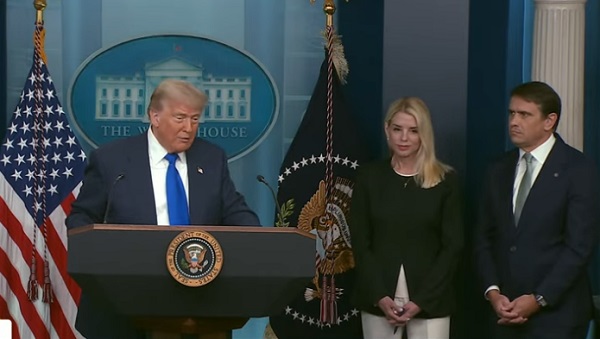
 Business1 day ago
Business1 day agoTrump on Canada tariff deadline: ‘We can do whatever we want’
-

 Brownstone Institute2 days ago
Brownstone Institute2 days agoFDA Exposed: Hundreds of Drugs Approved without Proof They Work
-
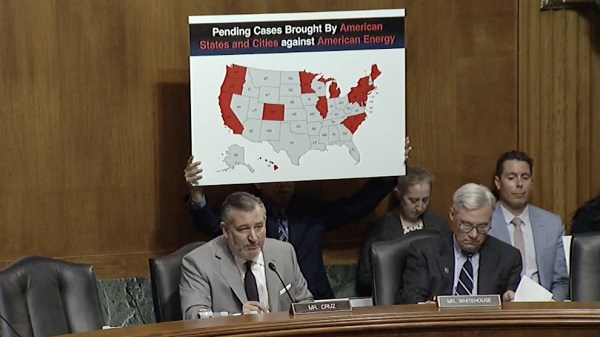
 Energy1 day ago
Energy1 day agoChina undermining American energy independence, report says












